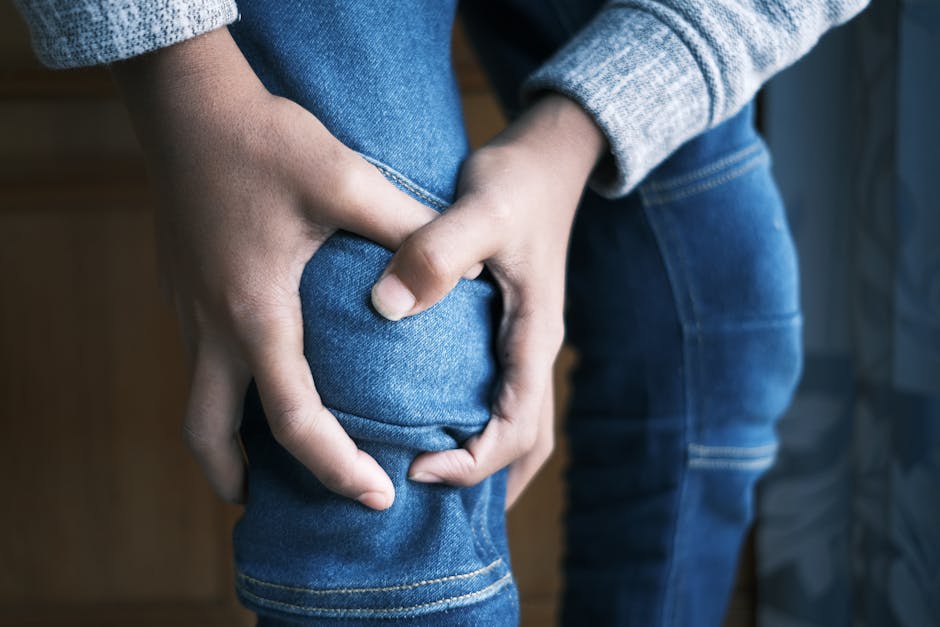Unlocking the Mystery of Joint Pain: Exploring Common Causes
Joint pain is a prevalent condition that affects millions of people worldwide, impacting their daily lives and overall well-being. Whether it’s a lingering discomfort or a sharp, sudden ache, joint pain can be a significant hindrance to mobility and quality of life. In this comprehensive guide, we delve into the common causes of joint pain, shedding light on the factors that contribute to this often debilitating condition. From arthritis to injuries, inflammation to lifestyle choices, we explore the intricate web of reasons behind joint pain, offering insights and solutions for those seeking relief.
The Complexities of Joint Pain

Before we dive into the common causes of joint pain, it’s essential to understand the complexity of the human body’s joint structure. Joints are the connections between bones, providing support and facilitating movement. They are composed of cartilage, synovial fluid, ligaments, and tendons, all working together to ensure smooth and pain-free motion. When any of these components are disrupted or damaged, joint pain can arise, signaling an underlying issue that needs attention.
Arthritis: The Culprit Behind Chronic Joint Pain

Arthritis is a leading cause of joint pain, affecting millions of individuals worldwide. This inflammatory condition targets the joints, causing pain, stiffness, and swelling that can be debilitating. There are several types of arthritis, including osteoarthritis, rheumatoid arthritis, and psoriatic arthritis, each with its unique set of symptoms and treatments. Osteoarthritis, the most common form of arthritis, occurs when the protective cartilage that cushions the ends of bones wears down over time, leading to pain and stiffness. Rheumatoid arthritis, on the other hand, is an autoimmune disorder that causes the body to attack its joints, resulting in inflammation and pain.
Individuals with arthritis often experience joint pain that worsens with age and activity, making everyday tasks challenging. While there is no cure for arthritis, treatments such as medication, physical therapy, and lifestyle modifications can help manage symptoms and improve quality of life.
Injuries: The Acute Causes of Joint Pain

Accidents, falls, and sports injuries are common culprits behind acute joint pain. When a joint is subjected to sudden impact or trauma, it can lead to sprains, strains, or fractures that cause pain and limited mobility. For example, a torn ligament in the knee from a sports injury can result in excruciating joint pain and instability, requiring surgical intervention to repair the damage.
Repetitive movements or overuse of a joint can also lead to injuries such as tendinitis or bursitis, causing pain and inflammation. These conditions often develop gradually over time, as seen in individuals who perform repetitive motions in their daily activities or occupations. Proper rest, physical therapy, and ergonomic adjustments can help alleviate pain and prevent further damage to the joints.
Inflammation: The Silent Aggressor of Joint Health

Chronic inflammation is a significant contributor to joint pain, as it can lead to conditions such as rheumatoid arthritis, lupus, and gout. Inflammation is the body’s natural response to injury or infection, but when it becomes chronic, it can damage the joints and surrounding tissues, causing pain and stiffness.
Diet plays a crucial role in managing inflammation, as certain foods can either promote or reduce inflammatory responses in the body. A diet rich in fruits, vegetables, whole grains, and healthy fats can help reduce inflammation and alleviate joint pain. On the other hand, processed foods, sugary snacks, and trans fats can worsen inflammation and contribute to joint discomfort.
Lifestyle Choices: Impacting Joint Health
Our lifestyle choices, such as diet, exercise, and weight management, can significantly impact our joint health. Being overweight or obese puts added stress on the joints, particularly the knees, hips, and spine, leading to pain and reduced mobility. Regular exercise, including low-impact activities like swimming and yoga, can help strengthen the muscles around the joints and improve flexibility, reducing the risk of joint pain.
Smoking and excessive alcohol consumption can also affect joint health, as they can increase inflammation and hinder the body’s ability to heal from injuries. Quitting smoking and moderating alcohol intake can have a positive impact on joint pain and overall health.
Genetics: The Role of Heredity in Joint Pain
Genetics can play a significant role in determining an individual’s susceptibility to joint pain and related conditions. Some people may inherit genetic factors that predispose them to arthritis, osteoporosis, or other joint disorders, making them more prone to developing joint pain at an early age. Understanding your family history and genetic risk factors can help you take proactive steps to manage joint pain and prevent potential complications.
Posture and Ergonomics: The Impact on Joint Health
Our posture and ergonomics can influence the health of our joints, especially in the neck, back, and shoulders. Poor posture, such as slouching or hunching over a computer, can strain the muscles and ligaments in the spine, leading to pain and discomfort. Ergonomic adjustments in the workplace, such as using an ergonomic chair and setting up your workstation properly, can help alleviate joint pain and improve posture.
Regular stretching and strengthening exercises can also help maintain proper alignment and reduce the risk of joint pain due to poor posture. Practicing mindfulness and body awareness can further enhance your posture and posture, promoting overall joint health.
Common Misconceptions About Joint Pain
There are several misconceptions surrounding joint pain that can lead to confusion and misinformation. One common myth is that joint pain is a normal part of aging and cannot be prevented. While it’s true that joint pain may become more common as we age, there are ways to reduce the risk and manage symptoms effectively through lifestyle modifications and proper medical care.
Another misconception is that joint pain is always a sign of arthritis. While arthritis is a prevalent cause of joint pain, there are many other factors, such as injuries, inflammation, and lifestyle choices, that can contribute to joint discomfort. It’s essential to consult with a healthcare provider to determine the underlying cause of your joint pain and develop an appropriate treatment plan.
Comparative Analysis: Joint Pain vs. Muscle Pain
It’s important to distinguish between joint pain and muscle pain, as they have different causes and treatments. Joint pain is often characterized by discomfort in the areas where the bones meet, while muscle pain typically arises from overuse or injury to the muscles themselves. Joint pain may be accompanied by swelling, stiffness, and reduced range of motion, while muscle pain can manifest as soreness, tightness, or weakness.
Treating joint pain usually involves managing the underlying condition, such as arthritis or inflammation, while muscle pain may respond well to rest, ice, compression, and elevation (RICE) therapy. Understanding the differences between joint pain and muscle pain can help you seek appropriate treatment and find relief from your symptoms.
FAQs About Joint Pain
1. How can I prevent joint pain?
Preventing joint pain involves maintaining a healthy weight, staying active, eating a balanced diet, and avoiding repetitive movements that strain the joints. Regular exercise, particularly low-impact activities like swimming and cycling, can help strengthen the muscles around the joints and reduce the risk of pain and injury.
2. When should I see a doctor for joint pain?
If you experience persistent or severe joint pain that interferes with your daily activities, it’s essential to consult with a healthcare provider. They can help diagnose the underlying cause of your joint pain and recommend appropriate treatments to alleviate your symptoms.
3. Can joint pain be cured?
While there is no definitive cure for joint pain, treatments such as medication, physical therapy, lifestyle modifications, and surgical interventions can help manage symptoms and improve quality of life. It’s essential to work closely with your healthcare provider to develop a comprehensive treatment plan that addresses your specific needs and concerns.
To Wrap Things Up
Joint pain is a common condition that can have a significant impact on your daily life and overall well-being. By understanding the common causes of joint pain, you can take proactive steps to prevent and manage your symptoms effectively. Whether it’s arthritis, injuries, inflammation, or lifestyle choices, there are various factors that can contribute to joint pain, each requiring a tailored approach to treatment and care. By prioritizing your joint health and seeking appropriate medical guidance, you can find relief from joint pain and enjoy a better quality of life.




